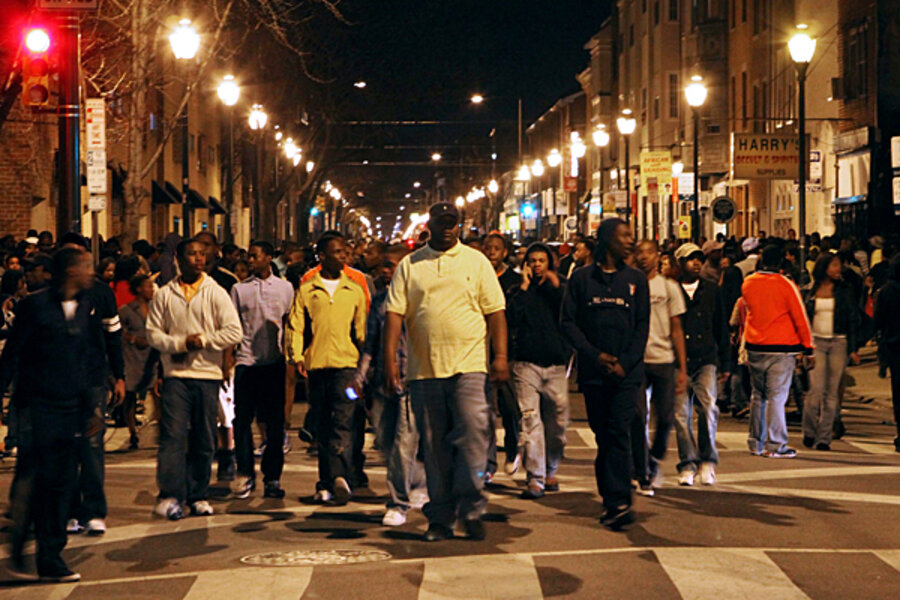Mall of Louisiana flash mob riot: not all flash mobs are alike
Loading...
The very idea of a teen flash mob is enough to send shivers through even the hippest of adults. Just think about it: Hundreds of adolescents, urged on by the forces of social media, gathering late at night, often with no real plan. Not exactly an environment for good judgement.
Indeed, take a glance at the news from the Mall of Louisiana. Last night, an apparent teen flash mob turned into a brawl in the food court – as well as a stampede and a police intervention that led to the mall's early closing.
And that’s only the latest example of scary teen flash mob incidents. Flash “robs” in Chicago, Philadelphia and elsewhere have gotten quite a lot of press over the past year, as have related brawls and random attacks.
But it’s not all bad. Teens have also gathered to show off their spontaneous dance moves in support of everything and everybody from anti-bullying efforts, Canadian aboriginals and sexual assault victims. And because we like teenagers over here at Modern Parenthood (they’re exasperating sometimes, sure, but really, who else thinks of a square-dancing flash mob for downtown Seattle? Or turning Michael Jackson’s “Thriller” into political activism?) we thought we’d give you a sampling of our favorite, awesome, teen flash mobs over the past year.
You know, just to balance out the coverage.
Democracy and gospel
Early last year, about 60 homeless children and their parents interrupted a Washington, D.C. city government hearing to protest funding gaps in homeless services and affordable housing programs. They handed representatives hand-painted houses with the message “Kids Need Homes” and sang gospel songs.
An education thriller
Sacramento State University students joined together in a choreographed flash mob in support of California’s Proposition 30 – a proposal (that later passed) to raise income taxes on the state’s wealthiest citizens and increase the sales tax in order to fund education. They boogied to Michael Jackson’s “Thriller,” which really must be one of the top flash mob tunes around.
“This is kind of a way to reach out to students and a cooler way to show, ‘Hey, Prop. 30 is here and if you’re interested about it you can go research it,’ ” graduate student Allison McNamara, who helped organize and choreograph the event, told the student paper.
Caine’s Arcade
OK, so this isn’t teen-only event, but it involves enough young people that we just had to include it. The story of the little boy in East L.A. who built his own arcade out of cardboard boxes in the front of his dad’s auto parts store was one of 2011’s most heartwarming tales. And if you recall, the turning point of the story was all about a flash mob. Filmmaker Nirval Mullick invited people over social media to show up at Caine’s elaborate homemade arcade and make the little boy’s day – the result was a tear-jerking and sweet film that also went viral online.
Do-Si-Do
In June, dozens of teens gathered in downtown Seattle, not to storm Nordstrom or 7-Eleven, but to.... square dance. Yup, square dance. As in do-si-do that partner. Admittedly, a number of the participants were in teen square dancing clubs, so it’s hard to know exactly how random was this random display of dancing. But the youtube video makes it look a lot more fun than it was during my middle-school camping trips ... and it seems from the footage that a bunch of adults walking by decide to join the fun.
Awareness raising
The Rhode Island Coalition Against Domestic violence organized a flash mob dance in Providence to raise awareness about teen dating violence. The young women (and a few guys) danced to Gloria Gaynor’s “I will Survive,” which is almost as good as “Thriller” for these purposes, we say. Teen activists have participated in a slew of similar dances across the country, from Washington, D.C. to St. Louis, Missouri.






